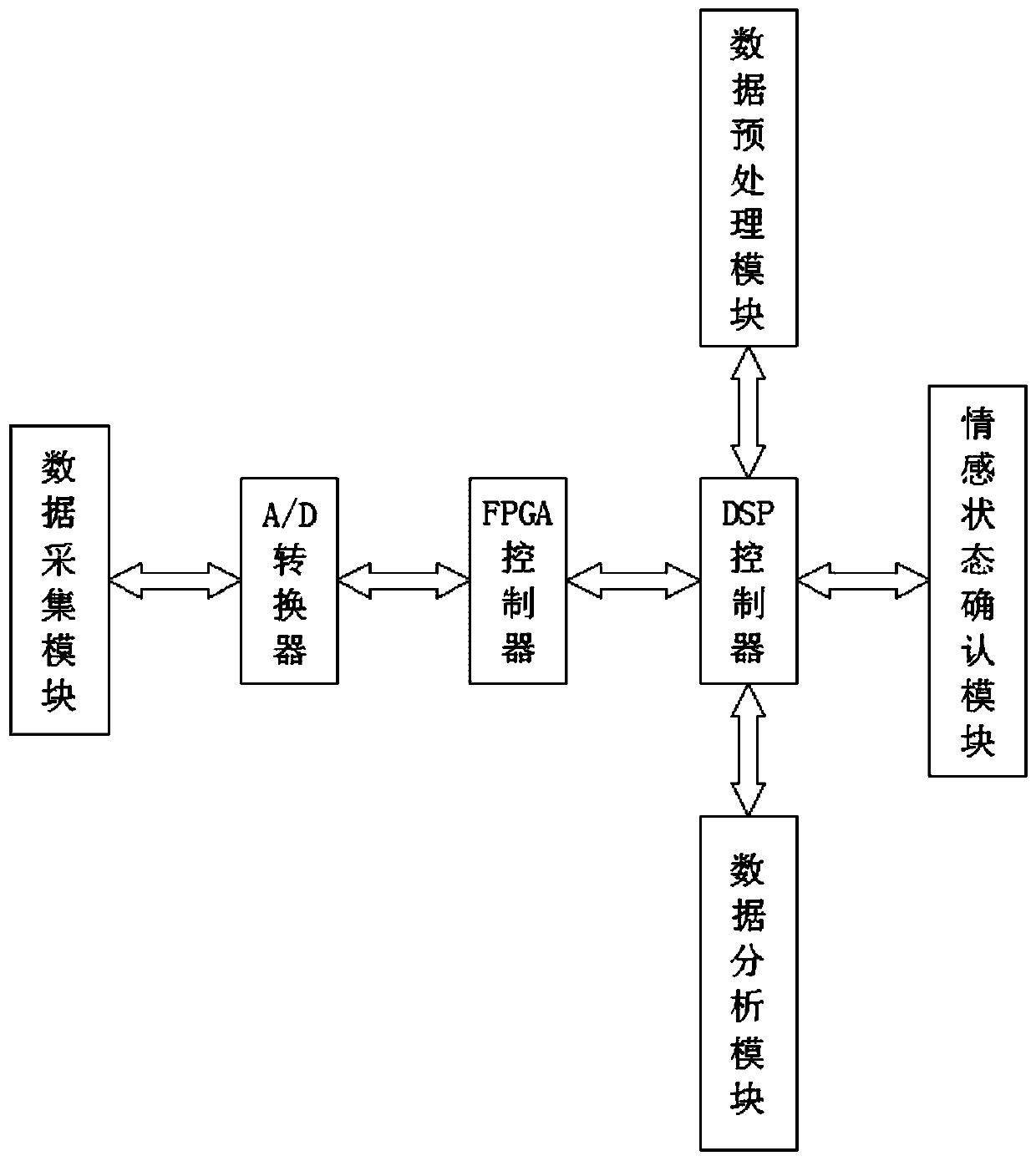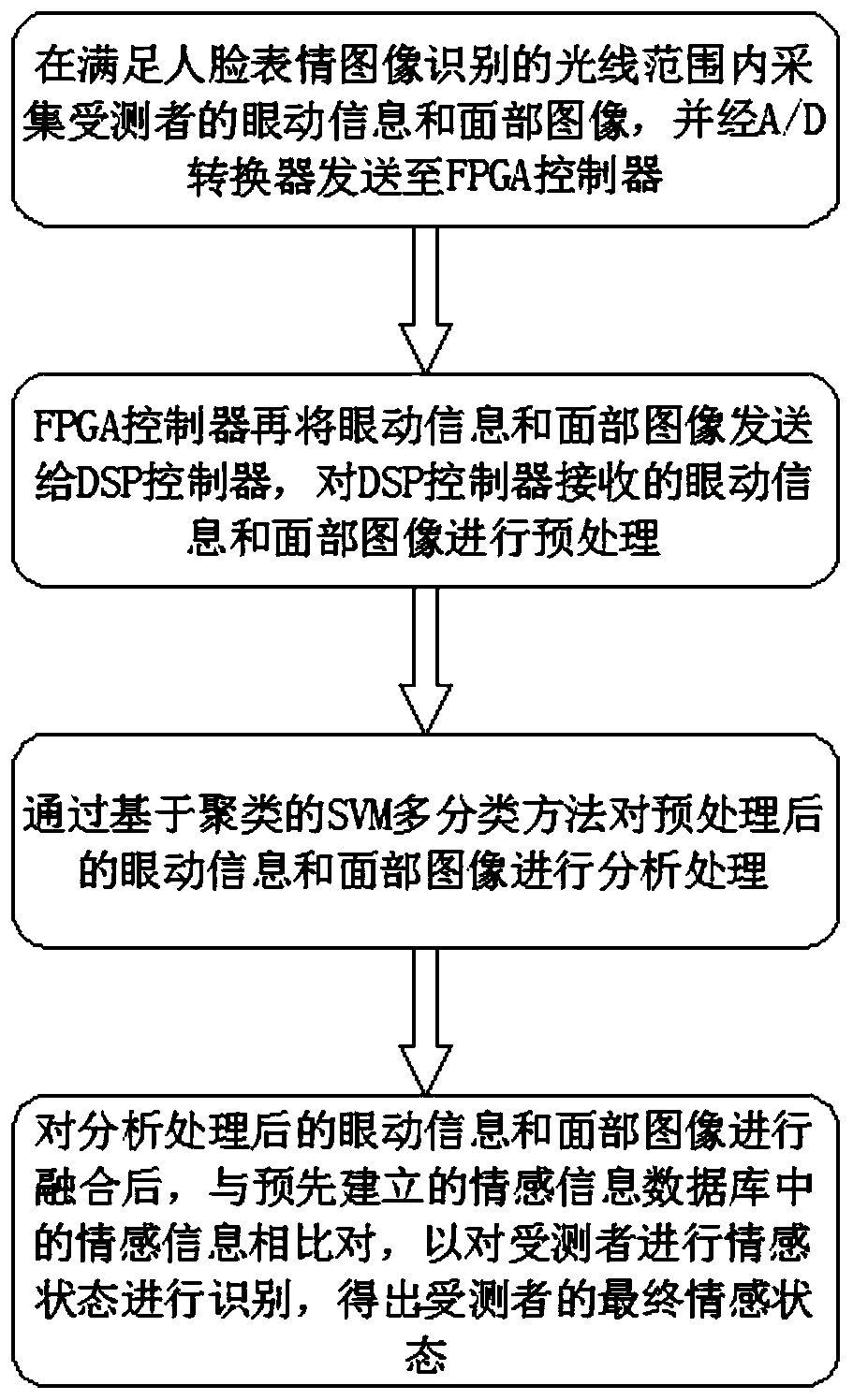Eye movement technology-based emotion measurement system and method
A measurement system and emotion technology, applied in the field of emotion cognition, can solve the problem of lack of analysis of eye movement trajectory dynamic indicators, and achieve the effect of efficient identification and broad application prospects.
- Summary
- Abstract
- Description
- Claims
- Application Information
AI Technical Summary
Problems solved by technology
Method used
Image
Examples
Embodiment Construction
[0063] In order to make the object, technical solution and advantages of the present invention clearer, the present invention will be further described in detail below in conjunction with the accompanying drawings and specific embodiments. It should be understood that the specific embodiments described here are only used to explain the present invention, not to limit the present invention. Based on the embodiments of the present invention, all other embodiments obtained by persons of ordinary skill in the art without making creative efforts belong to the protection scope of the present invention.
[0064] The present invention provides as figure 1 The shown emotion measurement system based on eye movement technology includes: data acquisition module, A / D converter, FPGA controller, DSP controller, data preprocessing module, data analysis module and emotional state confirmation module.
[0065] FPGA controller adopts XC3S500E array chip, and DSP controller adopts TMS320C6416 c...
PUM
 Login to View More
Login to View More Abstract
Description
Claims
Application Information
 Login to View More
Login to View More - R&D
- Intellectual Property
- Life Sciences
- Materials
- Tech Scout
- Unparalleled Data Quality
- Higher Quality Content
- 60% Fewer Hallucinations
Browse by: Latest US Patents, China's latest patents, Technical Efficacy Thesaurus, Application Domain, Technology Topic, Popular Technical Reports.
© 2025 PatSnap. All rights reserved.Legal|Privacy policy|Modern Slavery Act Transparency Statement|Sitemap|About US| Contact US: help@patsnap.com



